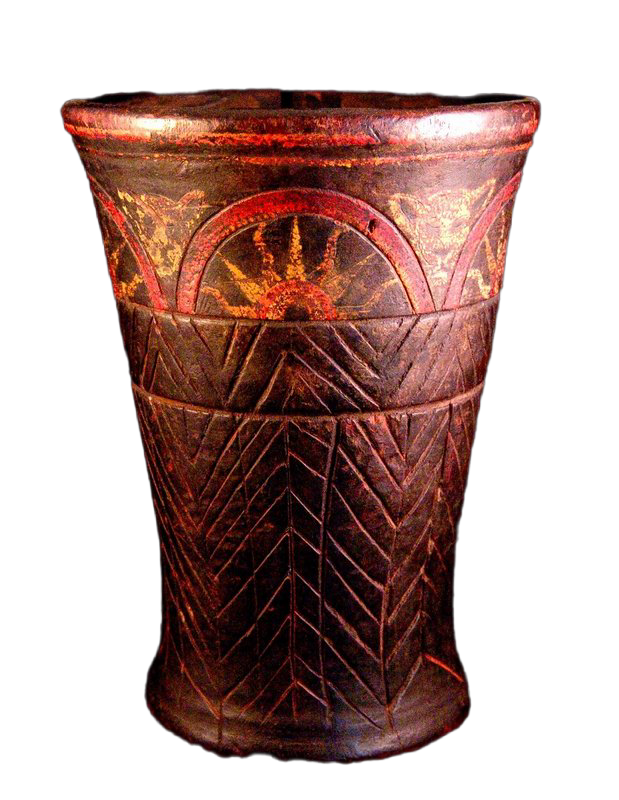The Pre-Columbian Era: Uncovering The Rich Masterpieces Of Ancient Civilizations
The pre-Columbian era, a term used to describe the period in the Americas before Christopher Columbus’s arrival in 1492, is an era rich with artistic, cultural, and architectural achievements. Civilizations such as the Olmec, Maya, Aztecs, and Inca flourished, creating sophisticated societies that produced some of the world’s most significant artistic and cultural contributions. These artifacts represent artistic achievement and reflect the complex social, political, and religious systems that defined these civilizations.
Origins and Overview of Pre-Columbian Civilizations
The term “Pre-Columbian” encompasses a wide geographic area that includes North, Central, and South America. It covers an extensive period that begins with the earliest known human settlements around 13,000 BCE and ends with the arrival of Europeans in the late 15th century.
Among the most notable Pre-Columbian civilizations are the Olmecs, the Maya, the Aztecs, and the Inca. Each of these cultures developed distinct traditions and styles of art, architecture, and religious practices. They also shared some common characteristics, such as the construction of monumental architecture, the creation of intricate works of art, and the development of complex political systems.
The Olmec: The “Mother Culture” of Mesoamerica
The Olmec civilization flourished between 1200 and 400 BCE in the tropical lowlands of modern-day Mexico and is often called the “mother culture” of Mesoamerica. Their influence permeated later Mesoamerican civilizations, including the Maya and the Aztecs.
Olmec art is most famous for its colossal stone heads carved from basalt, which can stand up to nine feet tall. These heads are believed to represent rulers or important figures, exhibit high craftsmanship, and are striking in their realistic depictions. The Olmecs also excelled in creating more miniature sculptures, often made of jade, representing humans and animals with remarkable stylization and symbolism.
Their intricate designs and carvings suggest that the Olmecs deeply understood iconography and mythology. For example, the were-jaguar, a recurring motif in Olmec art, is believed to represent a shamanic transformation between a human and a jaguar, symbolizing power and a connection to the supernatural world.
The Maya: Masters of Architecture and Writing
The Maya civilization peaked between 250 and 900 CE and is best known for its writing, mathematics, astronomy, and architectural achievements. The Maya developed a highly sophisticated writing system known as hieroglyphics, which they used to record their history, religion, and governance on stone monuments, codices, and ceramics.
Maya art, particularly sculptures and reliefs, often depicted gods, rulers, and critical historical events. They used limestone for most of their large-scale art, such as the stelae, which were tall stone slabs carved with images of rulers and inscriptions describing their achievements.
The Maya are also renowned for their monumental architecture, including their stepped pyramids, palaces, and observatories. The pyramid at Chichén Itzá, known as El Castillo, is one of the most iconic examples of Maya architecture. Its design reflects the Maya’s deep understanding of astronomy, as the pyramid aligns with celestial events, particularly the equinoxes. The Maya also built ball courts, where ritualistic games were played, and complex water management systems supporting their densely populated cities.
In addition to architecture, the Maya excelled in pottery and ceramics. Maya pottery often featured intricate designs, with scenes from daily life, religious rituals, and mythology. Many of these ceramics were used as burial offerings, demonstrating the Maya’s belief in an afterlife and the importance of honoring the dead.
The Aztec Empire: A Society of Warriors and Artists
The Aztec Empire, which dominated much of central Mexico from the 14th century until the Spanish conquest in 1521, is often remembered for its military prowess and human sacrifices. However, the Aztecs also produced a rich artistic and cultural legacy, much of which survives today.
Aztec art is distinguished by its bold use of color and symbolism. The Aztecs crafted large stone sculptures, intricately carved stone reliefs, and painted murals. Their art often depicted gods, warriors, and scenes of human sacrifice, reflecting their society’s religious and aggressive nature.
One of the most famous examples of Aztec art is the Sun Stone, also known as the Aztec Calendar Stone, which was discovered in Mexico City in 1790. The stone, which weighs about 24 tons, depicts the five eras of Aztec cosmology, with the sun god Tonatiuh at its center. The Sun Stone served as a calendar symbol of the Aztec belief in cyclical time and the inevitability of cosmic renewal through destruction.
In addition to stonework, the Aztecs were highly skilled goldsmiths, silversmiths, and feather workers. Featherwork was particularly prized by the Aztec elite, and elaborate feathered headdresses, cloaks, and shields were made for rulers and high-ranking warriors. The famous Penacho of Moctezuma, a feathered headdress believed to have belonged to the Aztec ruler Moctezuma II, is one of the finest examples of this art form.
The Aztec society also placed great importance on the written word, and they developed a system of pictorial writing to record their history and religious beliefs. Many of these records, codices, were painted on animal skins or paper made from tree bark. These codices provide invaluable insight into the Aztec Empire’s spiritual, political, and social life.
The Inca Empire: Masters of Stone and Engineering
While the Aztecs ruled in Mexico, the Inca Empire was the dominant power in South America. The Inca, whose empire stretched from modern-day Colombia to Chile, built one of the most sophisticated civilizations in the ancient world. Their empire reached its height in the 15th century before being conquered by the Spanish in 1533.
The Incas are perhaps best known for their architectural achievements, particularly their skill in stone masonry. They built vast cities, temples, and fortresses, often high in the Andes Mountains, using precisely cut stones that fit together without needing mortar. The most famous example of Inca architecture is Machu Picchu, an ancient city built on a mountain ridge above the Urubamba River in Peru. Machu Picchu is an extraordinary feat of engineering, with its terraced fields, complex drainage systems, and sophisticated stone buildings that have withstood centuries of earthquakes and weathering.
Inca art was often functional, with a strong emphasis on textiles, metalwork, and ceramics. The Incas wove complex textiles from alpaca and llama wool, using intricate patterns and vibrant colors that symbolized their gods, social status, and connection to nature. These textiles were highly prized and often used as offerings to the gods or as gifts to political allies.
Inca metalwork, mainly in gold and silver, was also highly developed. The Incas believed that gold represented the sun and silver the moon, and they used these metals to create religious objects, jewelry, and ceremonial items. The Golden Sun Disk, a significant, circular representation of the sun god Inti, was one of the most important religious artifacts in Inca culture. However, it was lost following the Spanish conquest.
Religious and Cultural Significance of Pre-Columbian Art
Pre-Columbian art was deeply intertwined with these ancient civilizations’ religious and cultural practices. In many cases, the art served as a medium for communicating with the gods and the spirit world. Temples, pyramids, and other monumental structures were built to impress and serve as sacred spaces where religious ceremonies, including sacrifices, were performed.
Many of the artifacts from the pre-Columbian era, such as sculptures, pottery, and textiles, were made as offerings to the gods or as funerary items to accompany the dead into the afterlife. The detailed iconography on these objects often depicted religious themes, such as gods, mythical creatures, and scenes from creation myths.
For example, the Incas and Mayans believed the universe was divided into three realms: the heavens, the earth, and the underworld. Their art often reflected this cosmology, depicting gods and mythical beings that governed each realm. In Maya art, the “Tree of Life” is a recurring motif, symbolizing the connection between these realms and the cycle of life and death.
The Legacy of Pre-Columbian Art
The legacy of pre-Columbian art continues to resonate in the modern world. Many of the artifacts created by these ancient civilizations are now housed in museums and private collections, where they are studied and admired for their beauty, craftsmanship, and historical significance. These works of art provide a window into the complex societies that existed in the Americas long before European contact.
Today, collectors and interior designers frequently incorporate pre-Columbian artifacts into residential and commercial spaces. The timeless nature of these works of art, coupled with their rich cultural significance, makes them highly sought after for their aesthetic appeal and historical value.
Conclusion
The Pre-Columbian era is one of human history’s most artistically and culturally prosperous periods. The civilizations of the Olmec, Maya, Aztecs, and Inca each made unique contributions to the world of art, architecture, and religious expression. Their achievements in sculpture, stonework, ceramics, and textiles continue to inspire awe and admiration today. As we continue to study and appreciate these masterpieces, we gain a deeper understanding of the rich cultural heritage of the Americas and the remarkable achievements of its ancient peoples.
Symbolism & Mythology in Pre-Columbian Art
Explore the Regional Division of Pre-Columbian Americas’ Major Archaeological Cultural Phases with Dates




